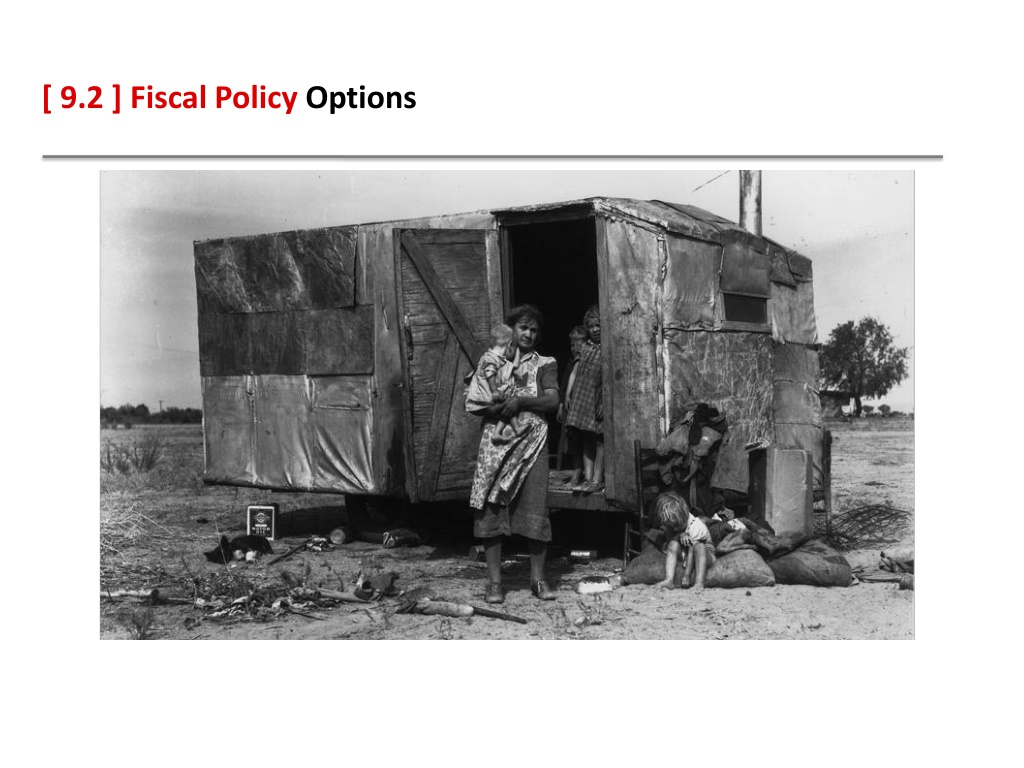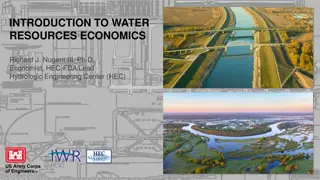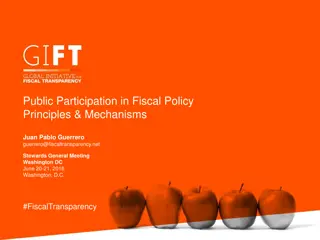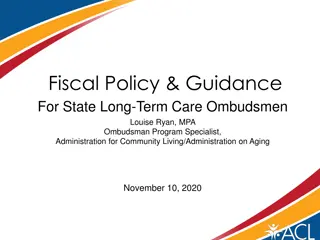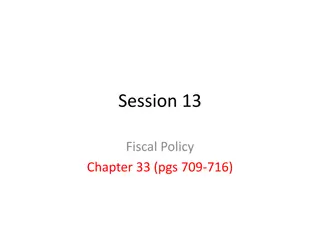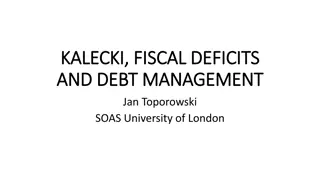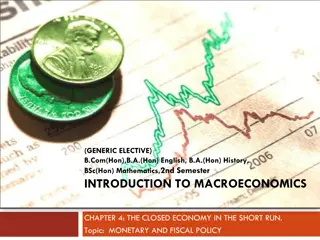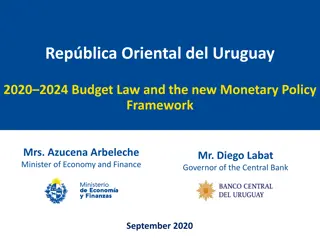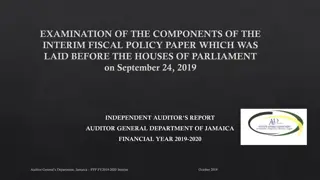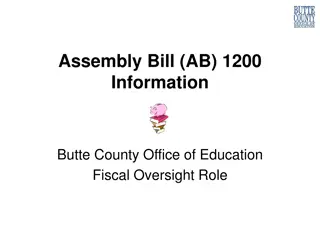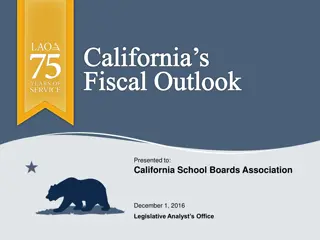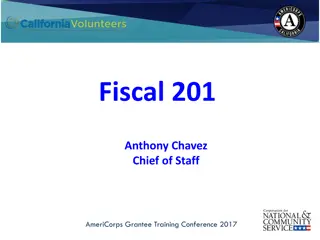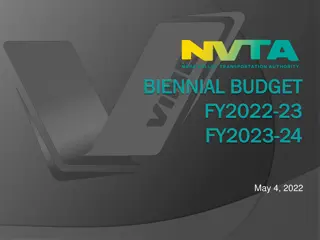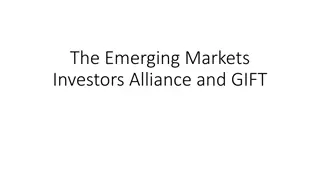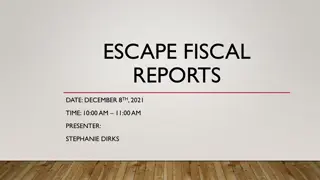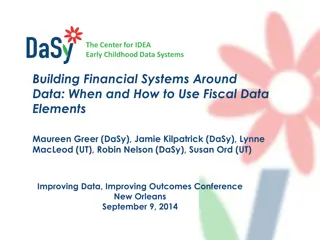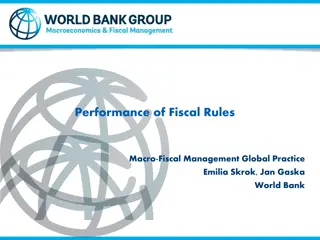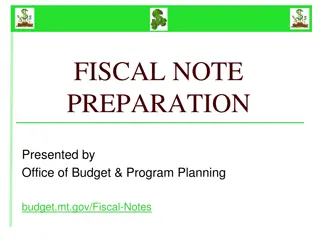Understanding Fiscal Policy Options in Economics
Explore the evolution of economic theories including classical economics, demand-side economics, and supply-side economics. Learn about the impact of key figures like John Maynard Keynes and Milton Friedman on fiscal policy decisions and the U.S. economy. Delve into the strategies employed during the Great Depression and the contrasting views of classical economics versus Keynesian economics, offering insights into government intervention in economic crises.
Download Presentation

Please find below an Image/Link to download the presentation.
The content on the website is provided AS IS for your information and personal use only. It may not be sold, licensed, or shared on other websites without obtaining consent from the author. Download presentation by click this link. If you encounter any issues during the download, it is possible that the publisher has removed the file from their server.
E N D
Presentation Transcript
[ 9.2 ] Fiscal Policy Options Learning Objectives Compare and contrast classical economics and demand-side economics. Analyze the importance of John Maynard Keynes and his economic theories. Explain the basic principles of supply-side economics and the importance of Milton Friedman. Analyze the impact of fiscal policy decisions on the economy of the United States.
[ 9.2 ] Fiscal Policy Options Key Terms classical economics John Maynard Keynes Productive capacity demand-side economics Keynesian economics multiplier effect automatic stabilizers Supply-side economics Arthur Laffer deficit spending John Kenneth Galbraith, Milton Friedman
Classical Economics Picture the scene: It s the Great Depression. Families everywhere are poor and hungry. Factories, shops, and even banks are closed, and millions are unemployed. People are not just anxious they are desperate.
Classical Economics During the Great Depression, government spending helped people like the family shown here. Generate Explanations Why do you think some people turn to the government for aid when times are difficult?
Classical Economics Classical economics taught that a struggling economy would recover on its own. But the Great Depression lasted for many years. Analyze Data Why do you think the economy took so long to recover during the Great Depression?
Keynesian Economics British economist John Maynard Keynes developed a new theory of economics to explain the Great Depression. Keynes presented his ideas in 1936 in a book called The General Theory of Employment, Interest, and Money. He wanted to develop a comprehensive explanation of macroeconomic forces. Such an explanation, he argued, should tell economists and politicians how to get out of economic crises like the Great Depression. In sharp contrast to classical economics, Keynes wanted to give government a tool it could use immediately to boost the economy in the short run. His theories have had a huge impact on the changing role of government in the U.S. free enterprise system.
Keynesian Economics Keynes Versus Classical Economics Changing Government s Role in the Economy Avoiding Recession Keynes and Inflation The Multiplier Effect The Role of Automatic Stabilizers
Keynesian Economics Ideas put forth by British economic philosopher John Maynard Keynes have had a lasting impact on the free enterprise system.
Keynesian Economics Keynes sought to achieve the full productive capacity of the economy. Analyze Graphs According to Keynes, what could fill the gap between low output and full productive capacity?
Keynesian Economics The multiplier effect helps explain how government spending boosts the economy. Synthesize Explain how the multiplier effect supports Keynesian theory.
Supply-Side Economics Another school of economic thought promotes a different direction for fiscal policy. Supply-side economics is based on the idea that the supply of goods drives the economy. Whereas Keynesian economics tries to encourage economic growth by increasing aggregate demand, supply-side economics relies on increasing aggregate supply. It does this by focusing on taxes. In recent years, supply-side economics has had a significant impact on the U.S. economy and free enterprise system.
Supply-Side Economics Analyzing the Laffer Curve The Relationship Between Taxes and Output
Supply-Side Economics The Laffer curve shows the theoretical effect increasingly higher tax rates have on tax revenues. Analyze Graphs According to the Laffer curve, what do both a very high and a very low tax rate produce?
The Recent History of U.S. Fiscal Policy As you recall, Keynes presented his ideas at a time when the world economy was engulfed in a severe economic downturn. President Herbert Hoover, a strong believer in classical economics, thought that the economy was basically sound and would return to equilibrium on its own, without government interference. His successor, President Franklin D. Roosevelt, was more willing to increase government spending to help boost the economy.
The Recent History of U.S. Fiscal Policy World War II Postwar Keynesian Policy Supply-Side Policy in the 1980s A Return to Keynes
The Recent History of U.S. Fiscal Policy Women workers during World War II complete the assembly of nose cones for attack bombers. Government spending funded factories like this one all across the United States.
The Recent History of U.S. Fiscal Policy The top marginal tax rates rates affecting the highest incomes have varied widely over the last century. Analyze Graphs What has been the general trend in the top marginal tax rate since 1945?
